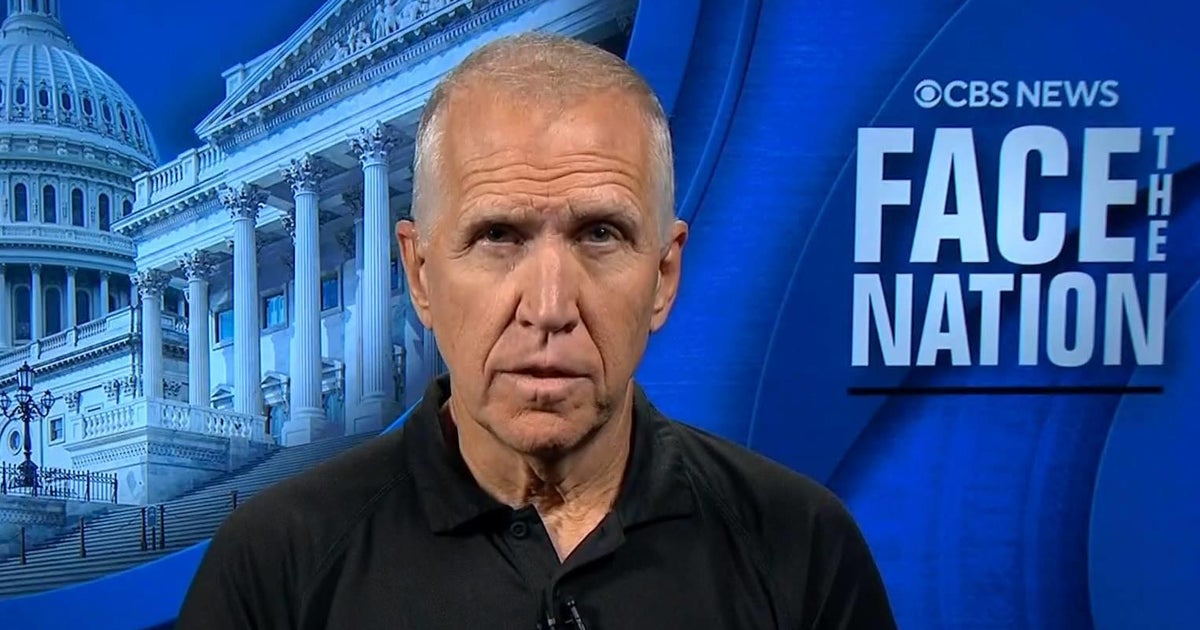CBS News
Videos show where cicadas have already emerged in the U.S.

Cicadas are returning by the trillions in the U.S. this year – a synchronized emergence that begins when the dirt reaches a precise 64 degrees. The buzzing bugs have already come out in some places – here’s where.
Where will cicadas emerge in 2024?
Two cicada broods are emerging at the same time this year, meaning the U.S. will see more cicadas than usual.
Brood XIX, which comes out every 13 years, will emerge in the Southeast in Kentucky, Missouri, Arkansas, Tennessee, Mississippi, Alabama, Georgia, South Carolina, North Carolina and Virginia.
Brood XIII, which comes out every 17 years, will be seen in the midwest, primarily Illinois and Iowa.
Cicadas live underground for most of their lives, and at the end of their 13 or 17-year cycles, they emerge, fly into the trees, molt, mate and then die. Their babies then fall onto the ground and burry themselves into the dirt while they await their next emergence.
They only come out at the end of their cycle, when the dirt reaches 64 degrees. This is expected to happen in May or June in most places, according to Ken Johnson, a horticulture educator at the University of Illinois. But some states warm up faster than others – and they’ve already seen cicadas emerging.
Videos show where cicadas have already emerged
Near the Georgia-South Carolina border on April 25, CBS News National Correspondent Dave Malkoff found thousands of cicadas filling the air with their signature, loud buzzing sound. Some were seen molting, or shedding their skin, on a tree trunk.
“They take a while to turn into their full adult bodies,” Malkoff said, holding a cicada. “They have to dry out and then they get their wings.”
A small section of Illinois will see both Brood XIX and Brood XIII converge this year. In Champaign, Illinois last week, CBS Chicago’s Maddie Weirus went on the hunt for nymphs – or baby cicadas – with University of Illinois entomologist Katie Dana. They dug in the dirt and were able to collect samples of small cicadas.
In some of the southern states expected to get cicadas, people have reported their emergence.
Marie Gruss Sherr captured several videos of cicadas in Durham, North Carolina. Most of them were sitting in plants.
Cicadas are often confused with locusts, which eat plants. Cicadas instead get their nutrients from small branches. Most trees, however, will remain unharmed.
In Georgia near Lake Oconee, one cicada spotter captured the droning noise the bugs emit when they emerge.
Male cicadas let out a loud humming sound to attract female cicadas, who will in turn flick their wings to signal they are available to mate.
Last week, the cicadas were so loud that confused residents in Newberry County, South Carolina actually called the sheriff’s department to ask why they heard a “noise in the air that sounds like a siren, or a whine, or a roar.” The department assured residents it was just male cicadas trying to mate.
How long do cicadas live?
After they’ve emerged from their 13 or 17-year slumber underground, cicadas have a relatively short lifespan. About five days after they emerge, they start to mate, with the females laying their eggs in woody plants, using their ovipositor, or egg-laying organ. They inject about 10-20 eggs into branches and can around 500 to 600 eggs in a season, according to Johnson.
The eggs hatch about six weeks after they’re laid, but their parents die shortly after the mating process, lasting only about a month above ground.
CBS News
10/6: Face the Nation – CBS News

Watch CBS News
Be the first to know
Get browser notifications for breaking news, live events, and exclusive reporting.
CBS News
Sen. Thom Tillis says “the scope” of Helene damage in North Carolina “is more like Katrina”

As recovery missions and repairs continue in North Carolina more than a week after Hurricane Helene carved a path of devastation through the western part of the state, the state’s Republican Sen. Thom Tillis called for more resources to bolster the relief effort and likened the damage to Hurricane Katrina’s mark on Louisiana in 2005.
“This is unlike anything that we’ve seen in this state,” Tillis told CBS News’ Margaret Brennan on “Face the Nation with Margaret Brennan” on Sunday morning. “We need increased attention. We need to continue to increase the surge of federal resources.”
Hurricane Helene ripped through the Southeast U.S. after making landfall in Florida on Sept. 26 as a powerful Category 4 storm. Helene brought heavy rain and catastrophic flooding to communities across multiple states, including Georgia, South Carolina, Tennessee and Virginia, with North Carolina bearing the brunt of the destruction. Officials previously said hundreds of roads in western North Carolina were washed out and inaccessible after the storm, hampering rescue operations, and several highways were blocked by mudslides.
Tillis said Sunday that most roads in the region likely remained closed due to flooding and debris. Water, electricity and other essential services still have not been fully restored.
“The scope of this storm is more like Katrina,” he said. “It may look like a flood to the outside observer, but again, this is a landmass roughly the size of the state of Massachusetts, with damage distributed throughout. We have to get maximum resources on the ground immediately to finish rescue operations.”
Hurricane Katrina left more than 1,000 people dead after it slammed into Louisiana’s Gulf Coast in August 2005, flooding neighborhoods and destroying infrastructure in and around New Orleans as well as in parts of the surrounding region. It was the deadliest hurricane to hit the mainland U.S. in the last 50 years, and the costliest storm on record.
The death toll from Hurricane Helene is at least 229, CBS News has confirmed, with at least 116 of those deaths reported in North Carolina alone. Officials have said they expect the death toll to continue to rise as recovery efforts were ongoing, and a spokesperson for the police department in Asheville told CBS News Friday their officers were “actively working 75 cases of missing persons.”
On Saturday, the U.S. Department of Transportation released $100 million in emergency funds for North Carolina to rebuild the roads and bridges damaged by the hurricane.
“We are providing this initial round of funding so there’s no delay getting roads repaired and reopened, and re-establishing critical routes,” U.S. Transportation Secretary Pete Buttigieg said in a statement. “The Biden-Harris administration will be with North Carolina every step of the way, and today’s emergency funding to help get transportation networks back up and running safely will be followed by additional federal resources.”
President Biden previously announced that the federal government would cover “100%” of costs for debris removal and emergency protective measures in North Carolina for six months.
With North Carolina leaders working with a number of relief agencies to deal with the aftermath of the storm, Tillis urged federal officials to ramp up the resources being funneled into the state’s hardest-hit areas. The senator also addressed a surge in conspiracy theories and misinformation about the Biden Administration’s disaster response, which have been fueled by Republican political figures like former President Donald Trump.
Trump falsely claimed that Mr. Biden and Vice President Kamala Harris, his Democratic opponent in the November presidential election, were diverting funds from Federal Emergency Management Agency that would support the relief effort in North Carolina toward initiatives for immigrants. He also said baselessly that the administration and North Carolina Gov. Roy Cooper, a Democrat, were withholding funds because many communities that were hit hardest are predominantly Republican. Elon Musk has shared false claims about FEMA, too.
“Many of these observations are not even from people on the ground,” Tillis said of those claims. “I believe that we have to stay focused on rescue operations, recovery operations, clearing operations, and we don’t need any of these distractions on the ground. It’s at the expense of the hard-working first responders and people that are just trying to recover their lives.”
CBS News
Face the Nation: Tillis, Tyab, Russel

Watch CBS News
Be the first to know
Get browser notifications for breaking news, live events, and exclusive reporting.








